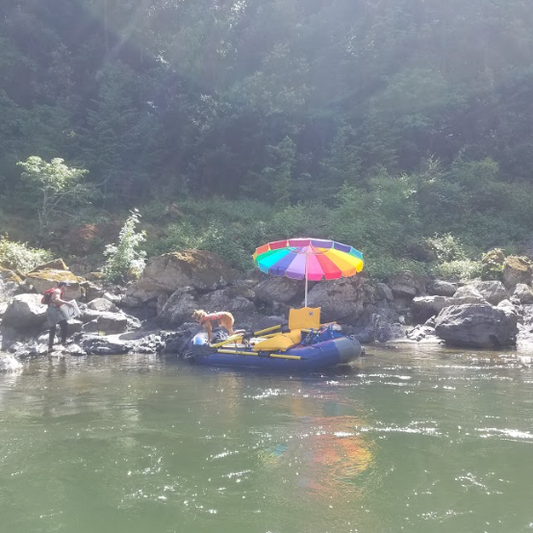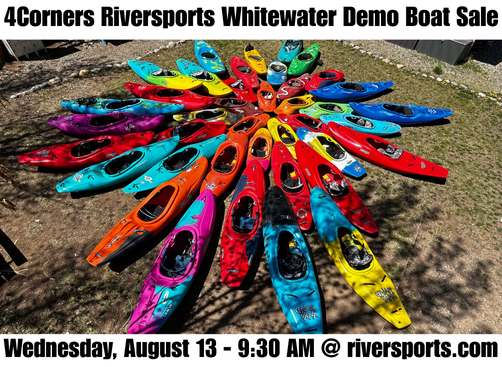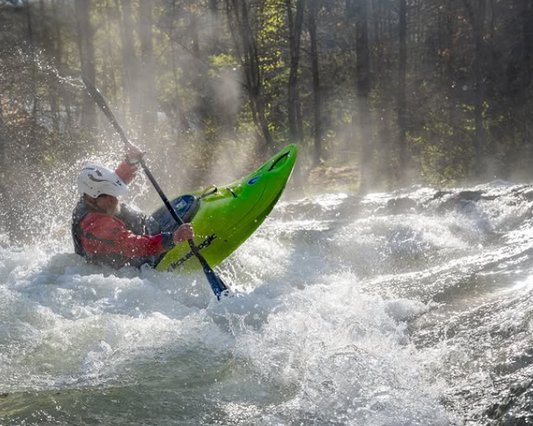Liquidlogic Security Bars from Shaneslogic on Vimeo.
Liquidlogic Security Bars: The part of the story you may not know.
Drew BeezleyShare
That’s right, an entire story about security bars.
You got two choices you can get the whole story about security bars by reading and checking out the photos or you can watch this video. They are pretty much the same. One you just look at parts and pieces. The other you have to listen to me yap.
I got into this because we just did a series of tests on our security bars, the attachment point of the bars, and the bolts that we use to screw them on to the boat. Often both paddlers and manufacturers overlook this component, but like everything on our boats, we’ve given the grab bars some serious love. Lots of people take it for granted that the “security bars” on a kayak are strong and can take a ton of pull and punishment but in fact I have heard lots of stories about groups pulling bars and handles off of kayaks in rescue or boat recovery situations. In a boat recovery its a bummer because you potentially ruin a boat but if you are trying to help unpin a person the failure of this system is a much more serious matter.
The Liquidlogic security bar is made of 7000 series aircraft grade aluminum (that’s aluminium for your foreigners) so you can fly it if you want to. Using that material allows it to be light and strong obviously. During our testing we only had one bar break and that was made by an old supplier of ours. The rest of the bars made it past 2000 lbs.
The bolt that we use to tie the security bar down to the boat is a stainless steel bolt so that it won’t rust but it is also rated to a similar strength to the other parts of the system. Choosing the right bolt doesn’t prove easy in this situation, either. Too soft and you strip the threads and heads, too hard and the head will pop off under serious pull. We’ve found a bolt rated to the strength that will match that of the bars, inserts, plastic, and throw ropes for optimum reliability.
These are the inserts that we mold into our boats. They used for attaching the bars. Each insert is held in the mold during the molding process by a pin. As the plastic flows through the mold it also coats and flows around the inserts, bonding them to the boat. The perforated part is encased in plastic and the threads are left exposed for use in attaching parts.
This is an insert much like the ones that other companies use. Enough said.
Here is our insert in the mold.
This is what the insert looks like once it is molded into the boat. This view is looking inside the kayak, under where the bar would be attached. The big deal with this insert is the size. You can see how big the surface area is and how the plastic has molded in, and around the insert. Its like having a stronger anchor to the whole system. This insert is rated a little over what the bars are rated for pull strength. You can look inside your boat and see the inserts, where they are placed, and what they hold on top of the boat. Notice the size of the insert in your boat. Its big indicator of the pull strength.
This is what the insert looks like from the outside of the boat. The threads are exposed for screwing into and you can just barely see the plastic that molds around the insert that keeps it from leaking. Now the fun part. I have pictures of things just about to break but the vide o has some slow motion of breaking things.
Here is a test we did on half a boat. Look how far the bar is bent and it still hasn’t broken.
This test was probably the most dangerous of them all. At 2200 lbs the head of the bolt sheared off and shot around like a bullet. Fortunately everyone in the plant was wearing bullet proof shielding and of course safety glasses. It looked like this.
I hope you enjoyed this mundane article about a part of the boat that most people don’t think about.
Cheers,
Shane
via ShanesLiquidLogic


















